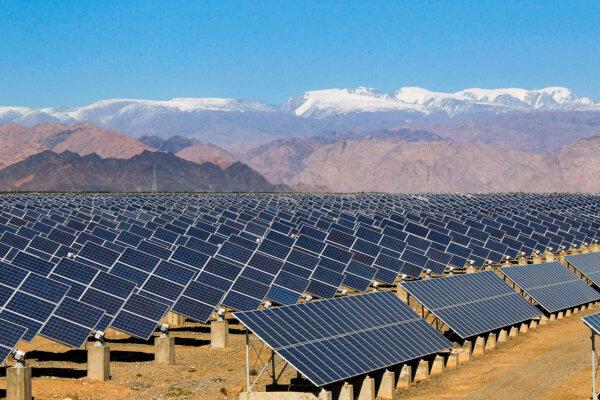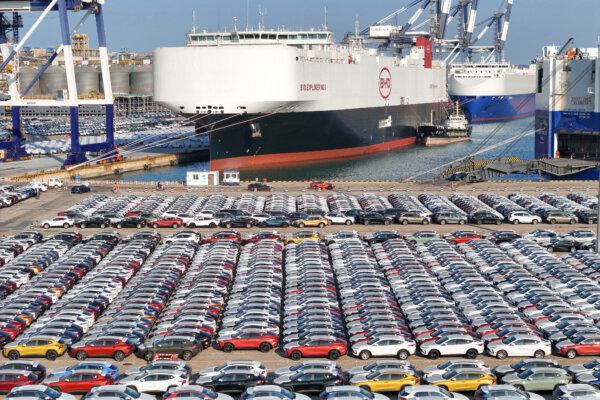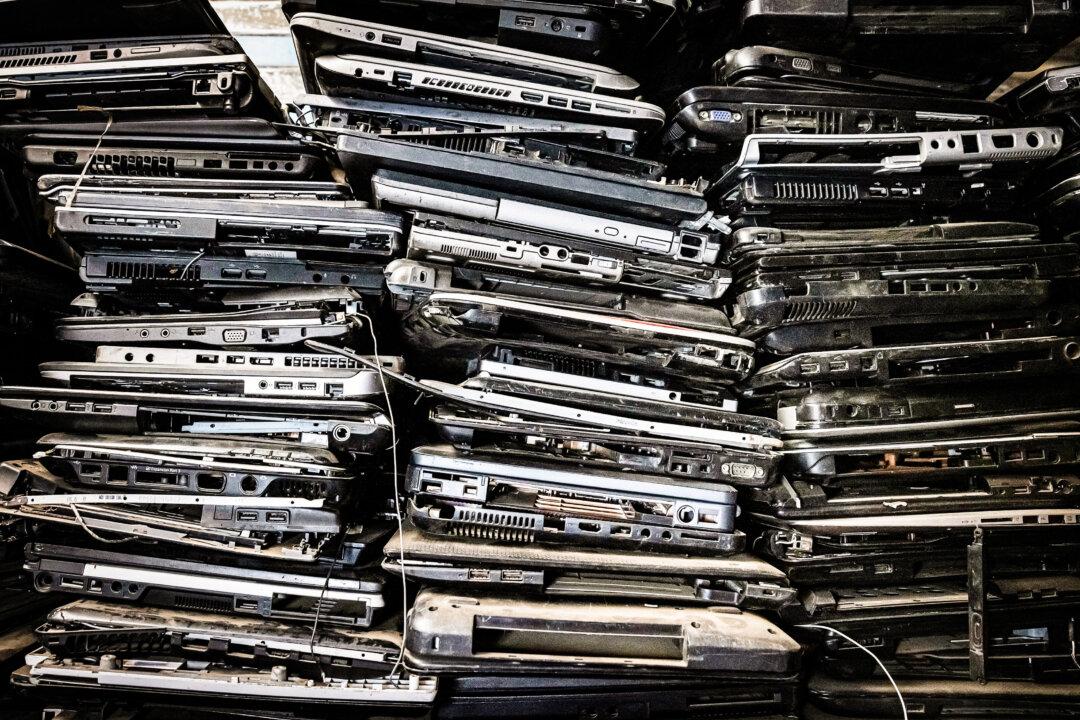Global production of electronic waste has outpaced the growth in global e-waste recycling by five times, raising serious environmental and economic concerns, according to the United Nations’ Global E-waste Monitor.
According to the U.N., electronic waste, or e-waste, is any household or business item with circuitry, electrical components, power, or battery supply that has been discarded. In different regions around the world, it is also referred to as electronic equipment, electrical waste, or e-scrap.
Around a third of e-waste comes from small devices like toys, vacuum cleaners, and cameras. Other examples of e-waste include cell phones, laptops, screens, monitors, televisions, and refrigerators.
According to the report, 68 million tons of e-waste were produced worldwide in 2022 but only around 15.4 million tons were recycled. At least 34 million tons of precious metals were left in e-waste in 2022 as well. If extracted and reused, the report’s authors claim they would be worth around $91 billion, minus costs of recovery.
“No more than 1% of demand for essential rare earth elements is met by e-waste recycling. Simply put, business as usual can’t continue,” she said.
“This new report represents an immediate call for greater investment in infrastructure development, more promotion of repair and reuse, capacity building, and measures to stop illegal e-waste shipments. And the investment would pay for itself in spades.”
The report also claims that properly recycling e-waste could help slow the spread of dangerous pollutants and substances. It’s claimed that harvesting metals from e-waste could help prevent 52 billion kilograms of CO2-equivalent emissions from ore excavation, while keeping substances like lead and mercury out of water sources.
At the same time, the authors claim that unsafe e-waste management costs $78 billion in externalized costs to human and environmental health, with an estimated $36 billion in long-term socioeconomic changes and $22 billion in medical expenses from pollutant-based illnesses.
Ruediger Kuehr, the senior manager of the U.N.’s Sustainable Cycles program, said taking action now would address the economic and health-related concerns and save money in the long term.
“In the face of all this, concrete steps are urgently needed to address and reduce e-waste,” he said.
E-Waste Issue Only Going to Get Worse
During its investigation, the U.N.’s Global E-waste Monitor found that e-waste production has grown by about 2.5 million tons per year since 2010, while recycling has only increased by about 0.55 million tons per year during the same timeframe.According to the report, technological developments, higher consumption, limited repair options, shorter product life cycles, design flaws, and inadequate e-waste management infrastructure are all contributing factors.
Widespread use of solar panels was highlighted as a contributing factor as well. Although the authors noted the renewable energy sector produces relatively little waste, at 0.66 million tons per year at the moment, that figure is expected to grow by a factor of four by 2030.
Solar panel waste, in particular, was flagged as having the potential to grow significantly when existing solar panels need to be replaced and small-scale solar devices with shorter lifespans become more popular.

Cosmas Luckyson Zavazava, director of the Telecommunication Development Bureau for the U.N.’s International Telecommunication Union, said governments worldwide need to work on regulations to address the growing issue of e-waste.
“The latest research shows that the global challenge posed by e-waste is only going to grow,” he said.
“With less than half of the world implementing and enforcing approaches to manage the problem, this raises the alarm for sound regulations to increase collection and recycling.”

According to the report, recycling rates vary significantly worldwide. Europe, the largest per-capita producer of e-waste, recycles 42.8 percent of its e-waste. In contrast, Asian countries, which produce half of all e-waste, recycle just 11.8 percent.
The authors claim the disparity is caused by legislation—specifically a lack of it. Out of the 193 countries analyzed in the report, only 81 had legislation regarding e-waste, and only 36 had formalized targets for e-waste recycling.
If nothing is done, the report suggests that just 20 percent of e-waste produced in 2030 will be recycled, costing a net $40 billion.
The authors claim that if nations implement voluntary collection and recycling schemes, 38 percent could be recycled.
Legislation in conjunction with either of these two options would apparently increase the e-waste recycling figure to 44 percent. The best case scenario presented by the authors would be if governments formalized the collection and recycling of e-waste with legislation and other support, which would supposedly help reach 60 percent of e-waste being recycled by 2030.







